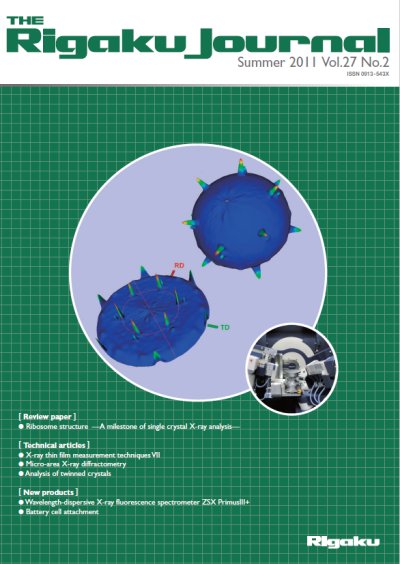A ribosome is a vast assembly consisting of proteins and RNAs. The molecular mass adds up to approximately 2.5 MDa, and it is the largest asymmetric entity whose structure has been solved in human history. The first step of X-ray structure analysis is to acquire wellordered crystals of the target material. Generally speaking, crystallization becomes more difficult as the size of the molecule increases. After this obstacle is overcome, one would then face the phase problem, a principle problem in crystallography. For such a huge complex, conventional phasing methods such as MAD and MIR may not work. Taking all of these issues into account, one can readily imagine that the structure determination of the ribosome must have been an extremely difficult task.
The 2009 Nobel Prize in Chemistry was awarded to those researchers who determined ribosome structures, not only because of the difficulty of the structure determination but also because the resultant structure answered many biological questions—such as underlying chemistry in protein synthesis—and is providing the basis for new drug discovery. Only X-ray structure analysis can yield the atomic structure of such an enormous complex.

